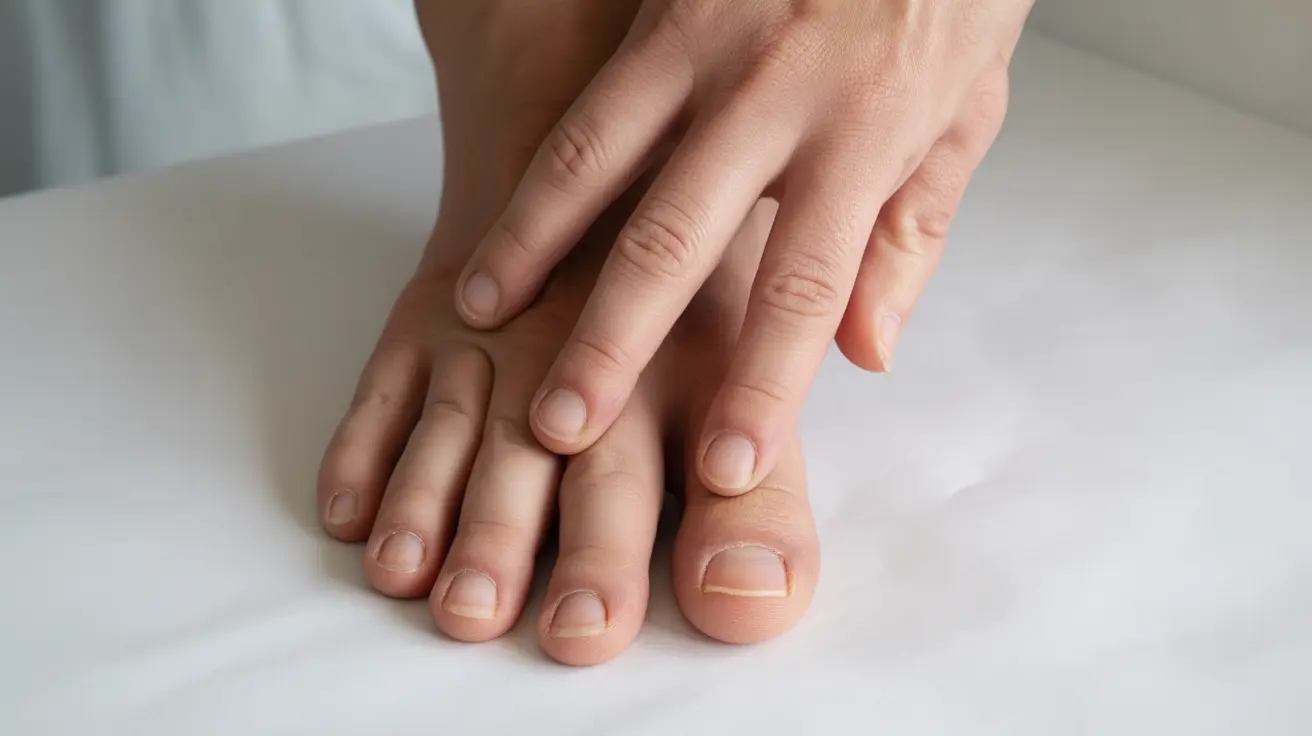Living with psoriatic arthritis can be challenging, as this chronic inflammatory condition affects both your joints and skin. Recognizing the symptoms early is crucial for getting proper treatment and managing the condition effectively. This guide will help you understand the various symptoms of psoriatic arthritis and what to watch for.
Whether you're newly diagnosed or concerned about developing this condition, understanding how psoriatic arthritis manifests can help you better communicate with your healthcare provider and take control of your health.
Common Joint Symptoms and Pain Patterns
Psoriatic arthritis typically causes distinct patterns of joint involvement that can help distinguish it from other types of arthritis. The most common joint symptoms include:
- Swelling and tenderness in joints
- Morning stiffness that improves with movement
- Pain that affects both sides of the body
- "Sausage-like" swelling in fingers and toes
- Lower back pain and stiffness
The pain can range from mild to severe and may come and go in cycles, with periods of increased symptoms (flares) followed by periods of improvement.
Distinctive Finger and Toe Changes
One of the hallmark signs of psoriatic arthritis is dactylitis, often called "sausage digits." This condition causes entire fingers or toes to become swollen, making them look like sausages. Unlike typical joint swelling, dactylitis affects the entire digit, including the soft tissue between joints.
Understanding Dactylitis
Key characteristics of dactylitis include:
- Uniform swelling along the entire finger or toe
- Tenderness and difficulty bending the affected digit
- Possible redness and warmth in the area
- May affect multiple digits simultaneously
Nail Changes and Their Significance
Nail changes are a significant indicator of psoriatic arthritis, affecting up to 90% of people with the condition. Common nail symptoms include:
- Pitting (small depressions in the nail surface)
- Separation of the nail from the nail bed
- Thickening and discoloration
- Vertical ridging
- Crumbling nails
Beyond Joint Pain: Systemic Symptoms
Psoriatic arthritis is a systemic condition that can affect multiple areas of the body. Additional symptoms may include:
- Persistent fatigue
- Eye inflammation (uveitis)
- Skin plaques characteristic of psoriasis
- Depression and anxiety
- Sleep disturbances
Treatment Approaches and Management
Modern treatment options for psoriatic arthritis focus on controlling inflammation, managing pain, and preventing joint damage. Common treatments include:
- Disease-modifying antirheumatic drugs (DMARDs)
- Biologic medications
- Nonsteroidal anti-inflammatory drugs (NSAIDs)
- Physical therapy and exercise
- Lifestyle modifications
Frequently Asked Questions
What are the most common joint symptoms of psoriatic arthritis and how do they typically feel? Joint symptoms typically include pain, stiffness, and swelling in multiple joints. The pain often feels warm, tender, and throbbing, particularly in the morning or after periods of rest.
How can I tell if my finger or toe swelling might be caused by psoriatic arthritis? Psoriatic arthritis typically causes uniform swelling along the entire finger or toe (dactylitis), making them look like sausages. This is different from other types of arthritis where swelling is typically localized to the joint itself.
What nail changes should I watch for that could indicate psoriatic arthritis? Look for nail pitting (small depressions), separation from the nail bed, thickening, discoloration, and crumbling. These changes can affect both fingernails and toenails.
Can psoriatic arthritis cause symptoms beyond joint pain, such as fatigue or eye problems? Yes, psoriatic arthritis can cause systemic symptoms including chronic fatigue, eye inflammation (uveitis), skin plaques, and emotional challenges like depression and anxiety.
What treatments are available to relieve psoriatic arthritis symptoms and prevent joint damage? Treatment options include DMARDs, biologics, NSAIDs, physical therapy, and lifestyle modifications. Early treatment is crucial to prevent joint damage and manage symptoms effectively.




